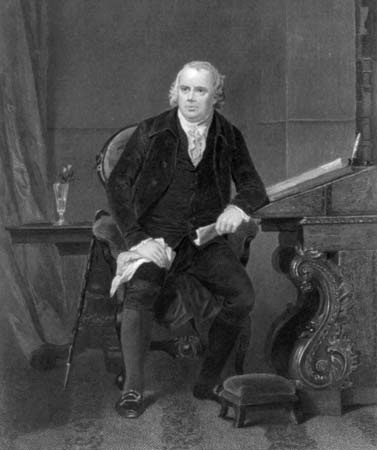Morris, Robert
American sculptor
born Feb. 9, 1931, Kansas City, Mo., U.S.
American artist whose minimalist sculptures and personalized performance works contributed significantly to the avant-garde movements of the 1960s and '70s.
Morris studied at the Kansas City Art Institute, California School of Fine Arts, Reed College, and Hunter College, New York City, where he taught art from 1967. His first one-man exhibition of paintings was held in San Francisco in 1957. In 1960, while living in New York, he began producing large, monochromatic geometric sculptures, groups of which he exhibited in specific spatial relationships. His work of this period greatly affected the minimalist movement, which sought to reduce art to its essence by eliminating personal expression and historical allusion.
From the late 1960s, however, Morris moved toward a more spontaneous, if anonymous, expressiveness. He experimented in a wide variety of forms, including the “happening”; “dispersal pieces,” in which materials were strewn in apparent randomness on the gallery floor; and environmental projects. His work of the 1970s showed a preoccupation with paradoxes of mental and physical imprisonment (e.g., “In the Realm of the Carceral,” 1979).
American statesman
born January 31, 1734, Liverpool, Merseyside, England
died May 8, 1806, Philadelphia, Pennsylvania, U.S.
 American merchant and banker who came to be known as the financier of the American Revolution (1775–83).
American merchant and banker who came to be known as the financier of the American Revolution (1775–83).Morris left England to join his father in Maryland in 1747 and then entered a mercantile house in Philadelphia. During the war, Morris was vice president of the Pennsylvania Committee of Safety (1775–76) and was a member of both the Continental Congress (1775–78) and the Pennsylvania legislature (1778–79, 1780–81, 1785–86). Because he was hoping for reconciliation with Britain, he did not sign the Declaration of Independence until several weeks after its adoption.
As chairman or member of various committees of the Continental Congress, Morris practically controlled the financial operations of the war from 1776 to 1778. He raised the funds that made it possible for General George Washington (Washington, George) to move his army from the New York area to Yorktown, where Lord Cornwallis (Cornwallis, Charles Cornwallis, 1st Marquess and 2nd Earl, Viscount Brome, Baron Cornwallis of Eye) surrendered (1781). Morris had borrowed from the French, requisitioned from the states, and also advanced money from his own pocket. That same year, in Philadelphia, Morris established the Bank of North America. After the war he served as superintendent of finance under the Articles of Confederation (1781–84). He was a delegate to the Constitutional Convention (1787) and served in the U.S. Senate (1789–95). Meanwhile, he had disposed of his mercantile and banking investments and had plunged heavily into land speculation. When returns from his lands slowed, he fell into bankruptcy and was confined in a debtors' prison for more than three years before his release in 1801.
- Mesopotamia, history of
- Mesopotamian art and architecture
- Mesopotamian mythology
- Mesopotamian religion
- Mesosaurus
- mesoscaphe
- mesosphere
- mesozoan
- Mesozoic Era
- Mesquite
- mesquite
- Mesrop Mashtots, Saint
- Messager, André
- Messali Hadj, Ahmed
- Messalina Valeria
- Messalla Corvinus, Marcus Valerius
- Messapic alphabet
- Messapic language
- Messapii
- Messene
- Messenger
- Messenia
- Messenia, Gulf of
- Messenian Wars
- Messerschmitt, Willy